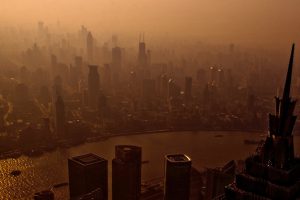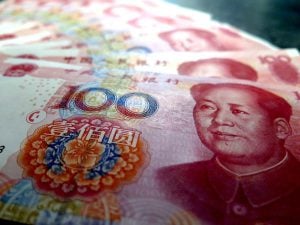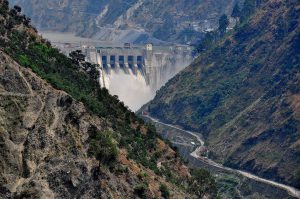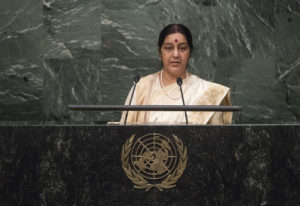Yang Fuqiang, NRDC’s senior advisor on energy, environment and climate change
This year will see the beginning of China’s 13th Five Year Plan (FYP), and it needs to be a good start. That means policymakers will have to apply the central government’s idea of “ecological red lines” when formulating plans, due for completion by June, for the energy sector over this period. There are several key parts of the 13th FYP that the outside world should be watching. First, a cap on total energy consumption, and in particular, whether or not there’s a cap on coal consumption.
Secondly, what mandatory energy targets are to be put in place? Will the 13th FYP’s targets for reductions in energy and carbon intensity be lower than 18% and 20% respectively (viewed as important thresholds) and will the 2016 target for the proportion of renewables in the energy mix go beyond 12.5%? We should also see the start of emission caps this year, in preparation for the launch of nationwide carbon trading in 2017.
China has put removal of excess production capacity at the top of a list of five economic tasks for 2016. This is going to have a particularly strong impact on the coal industry, as well as coal-consuming firms such as makers of steel, concrete and construction materials.
The lessons of last year’s widespread smog should be learned. China needs to better manage the small-scale coal burning which accounts for 30% of total coal consumption, and cut the number of coal mining firms, currently at over 6,000, by half. We estimate that coal consumption will drop by between 2.5% and 3% in 2016.
No new coal-fired power stations should be approved, unless special permission is obtained from central government. Development of nuclear power should only proceed if safety, stability and efficiency is assured; and no inland nuclear power plants should be approved this year. Further reductions in the wastage of solar and wind power should be made (known as curtailments in industry jargon), and the possibility of market quotas for renewable energy should be discussed.
These measures would help cut subsidies for renewables. One part of electricity sector reform particularly worthy of attention this year is the opening up of the retail market. We may see firms such as Alibaba, which can help consumers save electricity, get involved.
China will host the G20 this year, and we hope to see progress from these countries, which are also major emitters, on implementing the Intended Nationally Determined Contributions (INDCs) submitted ahead of last month’s climate talks, as well as greater agreement on funding issues.
China’s One Belt, One Road initiative will get started, and the Asian Infrastructure Investment Bank will make its first investments. We should watch how governments, businesses and NGOs use this to promote the joint welfare of developing nations and take a sustainable and green path.
Wang Hua, researcher at the Ministry of Environmental Protection’s Policy Research Center for Environment and Economy
Smog has become China’s most watched environmental issue – it’s affecting public health, economic development, and even social stability. But there is a lack of understanding of the both the science and the economics of air pollution. This has meant efforts and achievements in dealing with the problem have been disappointing. Hopefully we’ll see breakthroughs in 2016, perhaps leading to more cost-effective and efficient ways of tackling smog.
This year should see big increases in China’s environmental law enforcement capabilities and efforts. Internationally, China has been known for having weak and often broken environmental laws. But the revised Environmental Protection Law that took force 2015 is a driver of change, with a range of administrative and judicial reforms put in motion. This year will see further improvements at the central government level, with stronger central oversight and coordination with local governments. Both government and the courts will be coming down harder on businesses that breach environmental laws.
In 2016, we will also see China’s environmental movement expand and mature, becoming more organised and effective. Without full participation and encouragement from social forces (wider society), the Chinese government’s efforts to control pollution and improve environmental quality will be at best partial and slow.
Companies will not easily give up profits and spend more on environmental protection, and government and judicial efforts alone will not be enough to bring about major improvements. China’s people are now aware of the problem, but still lack power. I hope to see social forces play a much stronger role in environmental protection in 2016.
Gao Shengke, reporter, Caijing
In 2015 the Ministry of Environmental Protection launched a crackdown on official rent-seeking in the environmental impact assessment (EIA) sector, and we should look to see if that can be sustained and whether there can be further specific crackdowns on bad practices. There will also be scrutiny on whether the new environmental protection law and EIA reforms can be properly implemented. This has been a chronic problem, and a brief crackdown will not resolve it.
With the government promoting simpler administration and devolving of powers, the MEP’s handing down of EIA and oversight powers to local government in 2016 will be closely watched. Local environmental authorities have long lacked staff and capabilities – there is concern over their ability to block projects when necessary and oversee environmental protection efforts. How responsibility and human resources are divided up between central and local authorities will determine whether these reforms are successful.
Also, with action plans for air and water pollution in place, will there be a similar plan for soil pollution in 2016? And if so, how will that plan be assessed, in terms of responding to scientific evidence and potential outcomes?
Zhang Boju, Friends of Nature secretary general
This year will likely usher in possibilities for environmental rule of law and public participation. 2015 saw a revision of the Environmental Protection Law, and a new law on air pollution came into effect on January 1. These give environmental groups and members of the public more legislative tools with which to protect their own and the public interests.
As courts, lawyers and environmental groups become more familiar and experienced with these laws, we expect to see an increase both in quantity and quality of environmental public interest cases, and a rise in the number of targeted and preventative cases – such as those on air or soil pollution, or protecting biodiversity. We may also see some cases aimed at exposing and resolving failings in the law or policy-making, rather than dealing with specific environmental issues. We can also hope for breakthroughs in how administrative environmental public interest cases are brought to court.
The shift in emphasis from project-based to regional environmental planning will bring public participation further to the fore. Environmental groups and activists will need professionalism and the ability to mobilise the public to promote change.
Xie Yan, deputy researcher at the Chinese Academy of Science’s Institute of Zoology
A major environmental advance for 2016 will be the new revision of the law on protection of wild animals. A consultation draft was released late last year, and the revised law is to be published later this year. The new law will include protection of wild animal habitats, and allow for regular changes to the schedule of protected animals – currently it is difficult to make changes to a list first written 30 years ago.
The revision stresses the ecological and social importance of wild animals, but unfortunately still retains the principle of ‘reasonable utilisation’ of wild animals, almost turning it into an ‘wild animal utilisation law’. Debate over that will be focus for the year.
The year just past saw in-depth research into the nature reserve system. With more funding and better protection for national reserves, there will now be increasing awareness of the need to protect areas outside of reserves. I expect to see research into legislation for reserves in 2016, in order to provide stronger protection. We’re unlikely to see a new law soon, as too many different government bodies are involved, but there’s a new high in awareness of the importance of nature reserves.








